India, a land renowned for its rich and illustrious history, stands as a testament to the vibrant culture, time-honoured traditions, and the reigns of numerous monarchs. Throughout the previous century, India bore witness to the rule of many kings. Each of them has left a long-lasting mark on their kingdom and shaped their domains to reflect their personal preferences.
Consequently, the landscape of India offers numerous awe-inspiring architectural marvels and majestic palaces, demonstrating the architectural proficiency of a bygone era. With the advent of independence, these fragmented realms were unified into a democratic nation. However, the lineages of the ruling families made a good effort to preserve and safeguard these remarkable edifices.
Today, these splendid structures have been bestowed with the prestigious title of heritage sites, while some have transformed into luxurious hotels. Those visiting these hotels can hope to catch a glimpse into the regal lifestyle of yore.
Below is a selection of India's most exquisite palaces, encapsulating the very epitome of grandeur and magnificence.
City Palace, Jaipur
The City Palace, located in the heart of Jaipur, Rajasthan, stands as a magnificent complex that beautifully combines the architectural styles of Rajput and Mughal influences.
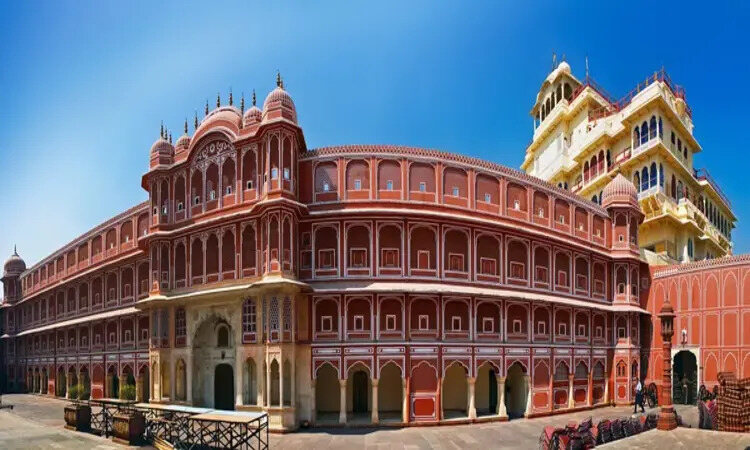
(Image Credit: Rajasthan Direct)
Encompassing a vast area, the City Palace comprises numerous courtyards, buildings, and gardens, each holding its charm and significance. Among the noteworthy structures found within the complex are the Chandra Mahal, also known as the Moon Palace, the Mubarak Mahal, or the Welcome Palace, the Diwan-i-Khas, or the Hall of Private Audience, the Diwan-i-Aam, or the Hall of Public Audience, and the Govind Dev Ji Temple.
The visionary behind this splendid masterpiece was Maharaja Sawai Jai Singh II, the esteemed founder of Jaipur and the ruler of the Kachwaha Rajput dynasty. The construction of the City Palace commenced in the year 1729 and continued to evolve across successive generations, as subsequent rulers made their unique contributions to the complex.
Getting Here
- 12015 | AJMER SHATABDI - Delhi (NDLS) To Jaipur (JP)
- 12955 | MMCT JAIPUR SF - Mumbai (MMCT) To Jaipur (JP)
- 12987 | SDAH AII SF EXP - Kolkata (SDAH) To Jaipur (JP)
Mysore Palace, Mysore
The Mysore Palace, also known as the Amba Vilas Palace, graces the city of Mysore in Karnataka. Renowned as one of India's largest palaces, it proudly served as the official residence of the esteemed Wadiyar dynasty, the rulers of Mysore. With its captivating Indo-Saracenic design, the palace harmoniously blends elements of Hindu, Islamic, Rajput, and Gothic architecture.
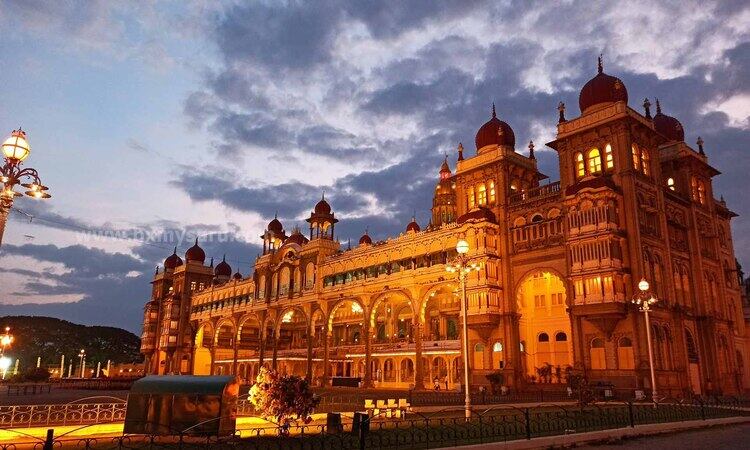
(Image Credit: bxmysuru.com)
It is especially revered for its magnificent Durbar Hall and the grand spectacle of the annual Dasara festival, celebrated with great grandeur and splendour.
The palace's history dates back to the 14th century when a wooden structure stood in its place. Unfortunately, this early palace succumbed to fire on multiple occasions. In response, Maharaja Krishnaraja Wadiyar IV commissioned the construction of the current Mysore Palace, which took place between 1897 and 1912. The architectural vision behind this masterpiece was brought to life by the British architect Henry Irwin.
Getting Here
- 12782 | NZM MYS SF EXP - Delhi (NZM) To Mysore (MYS)
- 11035 | SHARAVATI EXP - Mumbai (DR) To Mysore (MYS)
- 22817 | HWH MYS EXP - Howrah (HWH) To Mysore (MYS)
Umaid Palace, Jodhpur
Umaid Bhawan Palace was meticulously built by Maharaja Umaid Singh in the 20th century, It showcases a captivating blend of architectural styles, with Art Deco taking centre stage.
Today, the palace serves as a luxury hotel, a museum, and a cherished residence for the esteemed royal family, offering guests a truly regal experience amidst its majestic surroundings.
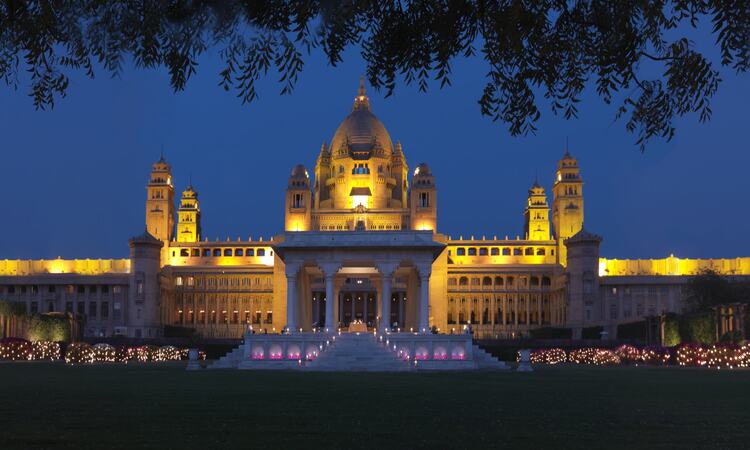
(Image Credit: Taj Hotels)
With its gorgeous sandstone structure, sprawling gardens, and awe-inspiring vistas of the city, Umaid Bhawan Palace exudes a timeless charm that leaves visitors spellbound. Its construction commenced in 1929 and reached completion in 1943, a period in which Jodhpur faced a severe drought. Maharaja Umaid Singh, in his benevolence, initiated the palace's construction as a means to provide employment and improve the living conditions of the local populace.
The architectural brilliance of Umaid Bhawan Palace can be attributed to the visionary collaboration between British architect Henry Lanchester and Indian architect Budhmal Rai.
Getting Here
- 22995 | MANDORE EXPRESS - Delhi (DLI) To Jodhpur (JU)
- 12307 | HWH JU EXPRESS - Howrah (HWH) To Jodhpur (JU)
- 14808 | DADAR BGKT EXP - Mumbai (DDR) To Jodhpur (BGKT)
Hawa Mahal, Jaipur
Hawa Mahal, meaning the "Palace of Winds," stands as a remarkable architectural gem located in Jaipur, Rajasthan. Maharaja Sawai Pratap Singh, a member of the esteemed Kachwaha Rajput dynasty, envisioned and commissioned the construction of this extraordinary palace in 1799.
Designed by the talented architect Lal Chand Usta, Hawa Mahal was ingeniously crafted to serve as a secluded court for the royal ladies, allowing them to observe the vibrant streets and lively festivities of the city while maintaining their privacy.
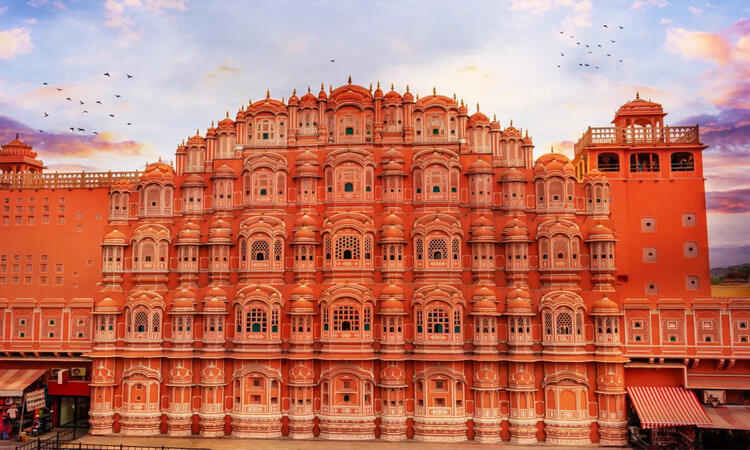
(Image Credit: TOI)
The palace owes its name, Hawa Mahal, to its unique and captivating facade, adorned with a multitude of small windows known as jharokhas. These intricate jharokhas, resembling a delicate honeycomb, are exquisitely carved and serve a dual purpose. Not only do they contribute to the palace's distinctive appearance, but they also facilitate the circulation of cool breezes, providing natural ventilation that offers respite even during the sweltering summer months.
The lattice work on these windows further ensured that the royal ladies could observe the outside world without compromising their privacy.
Getting Here
- 12986 | JP DOUBLE DCKER - Delhi (DLI) To Jaipur (JP)
- 12239 | HISAR DURONTO - Mumbai (MMCT) To Jaipur (JP)
- 12315 | ANANYA EXPRESS - Kolkata (KOAA) To Jaipur (JP)
Thirumalai Nayak Mahal, Madurai
Embark on a mesmerizing journey through the captivating tale of Thirumalai Nayak Mahal, a truly awe-inspiring palace that emerged during the splendid 1630s under the esteemed Nayak rulers' patronage. This architectural marvel is adorned with a plethora of embellishments that leave onlookers spellbound.
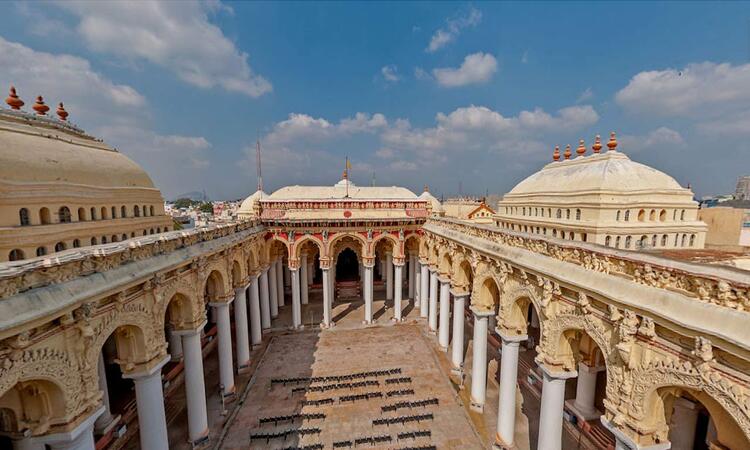
(Image Credit: Madurai Tourism)
Behold the myriad of pillars, meticulously adorned with thousands of intricate sculptures, that grace this beautiful palace. Enveloped by a majestic dome and surrounded by an ancient pond, this splendid royal residence stands as an unrivalled gem among the prominent attractions of Madurai, drawing visitors from far and wide. Its distinguished allure has earned it an esteemed place in every Madurai tour package, inviting travellers to experience its timeless grandeur.
Legend whispers of a turbulent past, where only a solitary section, known as Swargavilasa, endured the trials imposed by Thirumalai's grandson, leaving behind a mere quarter of the original palace. Pondering upon this historical fact ignites the imagination, conjuring images of the illustrious lineage carried by this architectural wonder.
Getting Here
- 12642 | NZM CAPE SF EXP - Delhi (NZM) To Madurai (MDU)
- 22629 | DADAR TEN EXP - Mumbai (DR) To Madurai (MDU)
- 02665 | HWH CAPE SPL - Howrah (HWH) To Madurai (MDU)
Conclusion
Over the centuries, the Indian subcontinent has seen the rise and fall of numerous kingdoms and empires. All of these kingdoms have left a lasting impression on the history of the country. This legacy is reflected in various ways including culture, philosophy and architecture.
The style and design of each palace reflect the architectural genius that was common during the time of its construction. While India is currently the largest democracy in the world, one can still find several monuments to the royal lineages of bygone eras.

